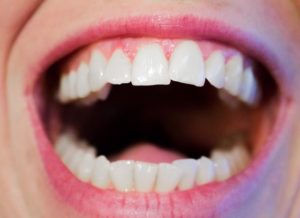Treating Moderate Periodontal Disease
Treating Moderate Periodontal Disease
Everyone knows they should take care of the teeth at home. Diligently brushing for two minutes twice a day. Flossing once a day. It’s really not a big time investment.
Still, many don’t put in the time, or pay enough attention. Their reward? Losing a tooth to periodontal disease. Dr. Kenneth Egger treats periodontal disease in the early to moderate stages to keep that from happening.
Bad news
Periodontal disease is commonly known as gum disease and it’s no fun. Periodontitis is the clinical term and it’s the leading cause of adult tooth loss in the United States. Once established, you’ll need ongoing treatment to keep it from getting worse. And by worse, we mean not only tooth loss, but jawbone deterioration and the possible link to other diseases such as heart disease and stroke.
Preventable
And it’s all so preventable. Home hygiene prevents periodontal disease in most people. And even in those who haven’t done a great job at home, periodontal disease doesn’t have to rear its head. The downward trend shows itself first in gingivitis, which is a fancy term for gum inflammation. When your gums begin to show areas of red color, instead of the former healthy pink hue, you know you’re not doing a good job with your hygiene. When your gums bleed easily, that’s also gingivitis showing itself. At this point, Dr. Egger can do things such as root planning and a simple professional cleaning to bring your teeth back to good health.
How does it get to gum disease?
When plaque and tartar build on your teeth, it progresses down below the gumline. When this happens, chronic irritation, inflammation, and infection will begin. As this trend continues your gums begin to pull away from the surface of the tooth root. This allows bacteria, food debris, and waste products from your body’s immune system to build up even deeper in your gums. As these pockets of infected material along the gumline deepen, the jawbone beneath starts to become affected by the constant inflammation. Now the bone begins to deteriorate and begins to have trouble holding the teeth above. The end of this progression is total tooth loss and a collapsing lower face that is all too familiar in many older people.
Signs to watch for
The best way to avoid any of this is to simply take good care of your teeth and to see Dr. Egger twice each year for professional cleanings and exams. Otherwise, these are the warning signs of periodontitis:
- Bleeding gums when you brush and floss
- Receding gums
- Red patches on your gums, especially at the gumline
- Persistent bad breath
- Loosening teeth
- Gum tissue that’s swollen, shiny, mushy, and dry to the touch
Treatment of mild to moderate periodontitis
Dr. Egger uses scaling and root planning to combat gum disease in its earlier stages. These procedures accomplish three things:
- Removing tartar and infectious material from the periodontal pockets
- Smoothing the surface of the tooth root to give bacteria less space to grow
- Helping the gums adhere to the tooth root again to keep bacteria and food debris out
If you’re showing any of the signs of periodontitis, don’t wait. Call Dr. Egger at 989-773-3560 and let’s take a look at the situation.

